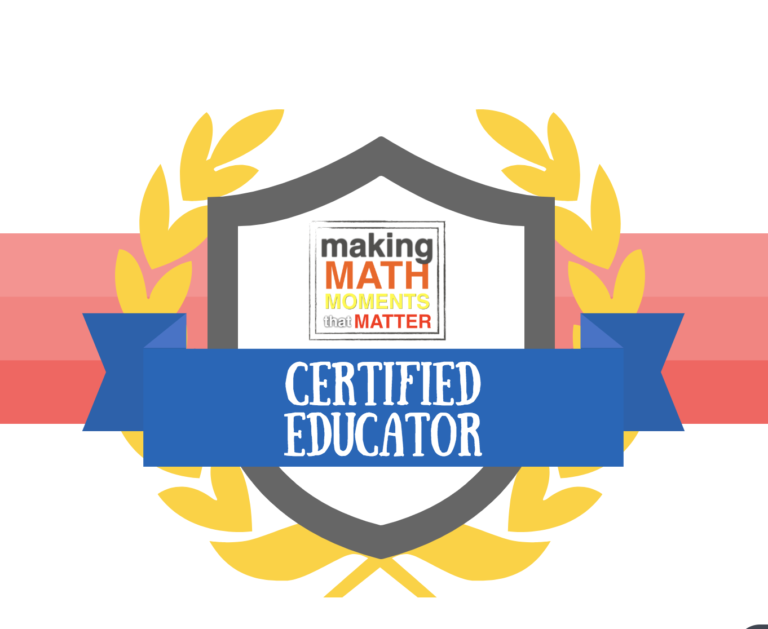There are only a few instructional days left with each of my classes before end-of-year testing begins and things have been getting a bit crazy, as they tend to do this time of year. I finally finished up the coursework for this workshop last weekend and have spent some time letting it all ruminate in my head, partly because I’m a processor and partly because of all the busyness that is happening.
The lessons in this section really hit home for me. It is the final piece of a puzzle that I’ve been trying to solve for nearly my entire career as an educator…how to fit everything in while ensuring students really understand.
Pacing. This word really brings me down. First, there’s the confidence thing. Because of my lack of success in this area, I really dread thinking about how to pace my courses. Second, there’s the philosophy thing. Pacing guides and frameworks handed down by the state or by districts always rub me the wrong way. They are created without taking into account the needs of individual students. They assume all students will learn at the same pace. I know this isn’t the way it works in the real world and this is probably the reason my pacing hasn’t been solid. I don’t like to move on to the next thing before students understand the current thing. Take dividing fractions in 6th grade as an example. The suggested framework developed by my state allows two weeks for this concept.
Two weeks might be enough if we are focused on teaching the procedures only or if the students already have a deep understanding of division and of fractions. In my case this year (and in all the years I have taught 6th grade) none of these things are true. As a result, I spent a couple of weeks building the concept of division (and multiplication) and building understanding of fractions. Then, we spent three or four weeks exploring different models and variations of dividing with fractions. By the end, not all students had mastered the concept, but they were all in a place where they could make sense of problems. Had I simply followed the pacing guide, these students would still be lacking the tools to divide with fractions. Yet, we spent three times the amount of time suggested by the framework.
How do I, as a math teacher, organize the learning in my classes so we are able to learn all of the required concepts in the time we are given?
Enter the idea of spiraling.
In a nutshell, spiraling a curriculum means to touch on all the important concepts several times throughout the course, diving deeper with each pass, and continuing to practice already learned ideas on a regular basis. It’s an application of what we know about how humans learn to what we want students to learn.
Sounds beautiful, right?
I have always thought the idea of spiraling a curriculum is brilliant. I have found, though, that the commercially available math programs that include spiraling still seem to lack that little something to make incredible math moments for my students. Some of them focus on procedures. Some of them confused my students because the lessons focused on a different idea every day. All of them required fidelity that I just couldn’t keep up with.
Kyle and Jon have made spiraling more attainable for me in this workshop. Not only did they set up the course in a spiraled way so that I was forced to deepen my understanding of the main concepts they are presenting throughout, but they also provide a guide to achieving this in my own math courses in this final session.
Basically, there are a LOT of options for beginning to spiral a curriculum. It is nice to know that I can start small if I want and build to a full spiral as the years go on. Here are a few ideas to begin with:
1. Find a partner. This could be a person in your building or in your network. Bounce ideas off of each other. Try things together. Reflect and regroup.
2. Spiral warm-ups and/or practice problems. Choose problems that revisit concepts to get students thinking before the lesson and during practice time. The more they retrieve an idea, the stronger it becomes.
3. Think Back Thursdays. Commit one day a week to revisiting a topic students are still developing. This can be an investigative activity or a series of interesting problems to solve.
4. Interleave assessments. Include a variety of questions on tests and quizzes instead of focusing only on the current concepts.
5. Lag homework. Wait until students are comfortable with a topic before assigning it for homework.
6. Look for tasks that require multiple connections. Using complex tasks can deepen understanding as students retrieve and connect previous concepts with current ones.
7. Divide units into spirals. Instead of teaching concepts as separate units, chunk several units into smaller pieces to spiral. Teach the surface level material in the first spiral and then deepen understanding with each subsequent spiral.
8. Spiral a single concept. Instead of teaching a big idea or unit, include problems and investigations for that idea or unit throughout the entire course.
9. Interleave activities or investigations. Similar to Think Back Thursdays, but without the rigid schedule of one day a week, sprinkle activities and investigations from previous concepts through each unit.
Taken from 9 Strategies to Begin Spiralling Now by Kyle Pearce & Jon Orr, Making Math Moments That Matter
The resources I use frequently in my classroom already spiral practice problems and I tend to spiral my warm-ups naturally (#2). I also tend to not give homework on new concepts and try to make homework a review of a skill or idea that is necessary for the current or upcoming topic (#3). Another thing I like to do is to use problems on quizzes that require students to use multiple ideas at once (#6). I have also attempted to spiral the single concept of ratio and proportional reasoning in 7th grade (#8).
I am glad to know I have been on the right track in these areas and am already a spiraling beginner! Now, I think I am ready to use some more advanced spiraling strategies as I plan for next school year.
I was really drawn to #7 as a way to organize my curriculum so that I am hitting all the concepts and standards during my courses. I really think using this method will help me avoid the maddening end-of-year rush I am in the middle of right now. I also like the idea of a single day each week (or maybe every other week) to focus on addressing misconceptions and having short quiz check-ins. {Assessments were also part of this module discussion, but I might have to write a separate post to reflect on this important piece!} As it stands right now, these are the two areas I would like to focus on for next year. I am hopeful that I can develop a working plan over the summer so I can start the year focused on creating lessons that will Spark Curiosity and facilitate Productive Struggle & Sense-Making. I am ready to get the most out of my Math Moments!
I would love to hear your thoughts on spiraling and on these ideas. What have you tried? Which strategies seem to fit the needs of you and your students? I would also love to connect with a few folks who are interested in partnering on this journey! Drop your ideas in the comments!



